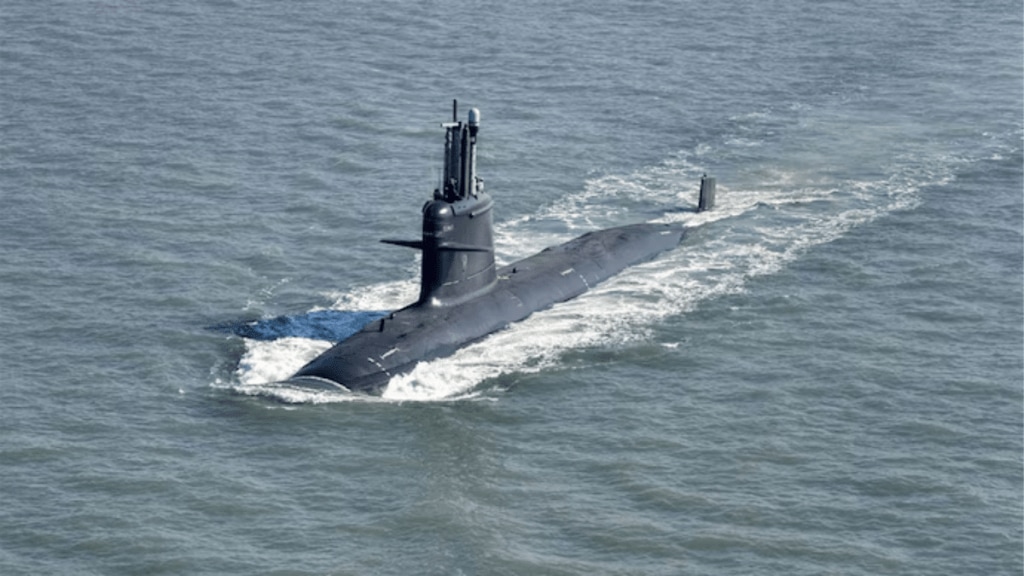The P-75I submarine project is a cornerstone of India’s efforts to enhance its underwater naval capabilities. At the heart of this program lies a crucial technology: Air-Independent Propulsion (AIP). Unlike conventional diesel-electric submarines, which must surface regularly to recharge batteries, AIP allows submarines to stay submerged for longer periods, enhancing stealth and operational effectiveness. As India evaluates multiple AIP solutions from global manufacturers, the Ministry of Defence (MoD) is reviewing the operational field trials conducted by the Indian Navy for Navantia and TKMS systems, while indigenous development by the Defence Research and Development Organisation (DRDO) progresses steadily.
In an exclusive conversation with Financial Express Online, C4I expert and Indian Navy veteran Milind Kulshreshtha emphasizes the pivotal nature of this technology. “AIP is not just a luxury; it’s a necessity for any modern navy. It reduces the submarine’s acoustic signature, enhances stealth, and provides a significant tactical advantage, particularly in Anti-Submarine Warfare (ASW) scenarios,” he says.
Advantages of Air-Independent Propulsion (AIP)
The inclusion of AIP offers a submarine distinct advantages over its conventional diesel-electric counterparts. Traditional submarines, powered by diesel engines, must surface frequently to intake air, exposing them to detection by adversary forces. AIP systems, on the other hand, allow submarines to remain submerged for extended periods, minimizing the risk of detection.
In naval warfare, stealth is everything, and underwater acoustics play a key role. The quieter a submarine, the more difficult it becomes for the adversary to detect and engage it. Submarines powered by diesel engines tend to produce more noise, from the propeller to the engine itself. This noise can be detected by enemy forces using acoustic sensors, increasing the “kill probability” of anti-submarine weapons such as torpedoes. As Kulshreshtha notes, “The louder the submarine, the easier it becomes for an adversary to lock onto it. AIP mitigates this risk by powering the submarine with minimal noise.”
Additionally, advanced ASW technologies such as submarine-hunting aircraft equipped with Magnetic Anomaly Detectors (MAD) and specialized radar systems are designed to detect even minor disturbances on the ocean surface, such as the protrusion of a submarine’s periscope. AIP helps mitigate these risks by allowing submarines to avoid surfacing frequently, enabling them to operate more discreetly.
Retrofitting AIP in Existing Submarines
India’s current fleet of Scorpene-class submarines under Project-75 may also benefit from AIP retrofits, a process that would require intricate engineering modifications. Kulshreshtha highlights the complexity of this undertaking: “Retrofitting an AIP system into an existing submarine is not just about adding a new component. It involves cutting the submarine in half to accommodate a new AIP compartment, which is a highly complex procedure.”
The AIP retrofit involves the installation of a dedicated machinery compartment for large equipment and complex subsystems, all while maintaining the submarine’s structural integrity and performance. The process starts with the submarine’s original equipment manufacturer (OEM) returning to the drawing board, ensuring that the retrofitting plans align with the submarine’s existing design specifications.
For the Indian Navy’s Kalvari-class submarines, which fall under the P-75 program, collaboration with Scorpene’s OEM, Naval Group, will be essential. This collaboration will ensure that the AIP systems are integrated without compromising the submarine’s stability and safety. Kulshreshtha elaborates, “The retrofit will be carried out during the submarine’s major additions and alterations (As&As) maintenance period. Once the AIP is installed, the submarine will undergo extensive tests, from stability checks to sea trials, to ensure it meets all operational specifications.”
A Test of Indian Shipbuilding Prowess
Retrofitting AIP into operational submarines presents a significant challenge to India’s shipbuilding capabilities. Following the installation of the AIP compartment, the submarine must undergo a series of rigorous stability tests, both surfaced and submerged. The C4I expert explains, “Submarine stability is a critical parameter that differs significantly from surface warships. These trials will be a true test of India’s engineering and shipbuilding expertise.”
Once the retrofitting process is complete, the submarine will enter dry-dock flooding, where stability measurements will be taken to ensure that the vessel can maintain its designed performance. Following these checks, the submarine will undergo sea trials to test its water-dynamic performance, including diving and surface maneuvers.
This meticulous process ensures that the submarine is not only operationally effective but also safe for the crew, as the stability of a submarine underwater is a far more delicate calculation compared to surface warships.
The Future of AIP in India’s Submarine Fleet
As India continues to evaluate AIP solutions for the P-75I project, the results of ongoing field trials for foreign OEMs like Navantia and TKMS will provide critical data for the MoD’s final decision. At the same time, DRDO’s indigenous AIP system is making progress, though it remains to be seen how quickly it can be operationalized for deployment.
Ultimately, the incorporation of AIP technology—whether through foreign suppliers or indigenous development—will significantly enhance the Indian Navy’s operational capabilities. As Kulshreshtha puts it, “The future of underwater warfare lies in stealth, and AIP is at the forefront of this evolution. For the Indian Navy, this is not just about technological advancement; it’s about securing strategic superiority in a contested maritime domain.”
By incorporating AIP technology, India will not only improve the endurance and stealth of its submarine fleet but also strengthen its overall naval deterrence, a critical factor in maintaining dominance in the Indian Ocean Region.

